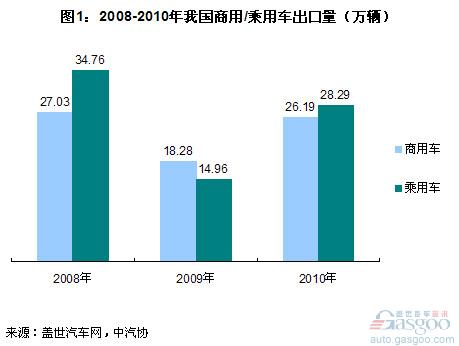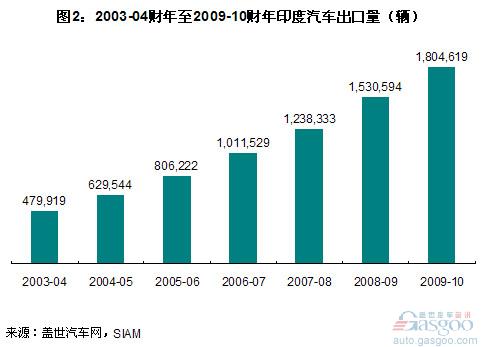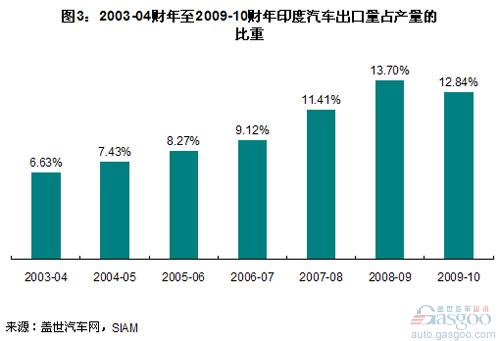The proportion of China’s auto exports is still at the lowest level in the world.

According to the data released by the China Association of Automobile Manufacturers, although China's total automobile output reached 18,264,700 units in 2010 and it ranks first in the world, its export volume is only 549,900, and it has not yet returned to its 2008 level. The export volume accounts for only 2.98% of the total output, which is the lowest level among the world's major automobile manufacturers. It is not only unable to reach the level of major auto export countries such as Europe, Japan and South Korea, but also inferior to Thailand, Mexico, etc. as the export base of international automobile companies. Not so much as the booming markets in India, Brazil and other local markets.
Germany's exports in 2010 amounted to 4,235,400 vehicles, accounting for 76.29% of production. Japan’s exports from January to November 2010 have reached 4,370,800. South Korea's total exports for 2010 were 2,771,500. Although Thailand’s annual export volume has not yet been announced, according to forecasts by the Thai Farmers Research Center, Thailand’s auto exports will reach 907,000 units in 2010. The agency also predicts that Thailand's auto exports in 2011 are expected to reach 970,101,500 vehicles.
China's auto exports account for less than other BRIC countries
India, which is a member of the BRIC countries, has continued to increase its export volume in recent years and has not experienced a decline even during the financial crisis. As of fiscal year 2009-10 (April 2009 to March 2010), the country's export volume has reached 1,804,600, an increase of 17.90% year-on-year. Officials from the Ministry of Heavy Industry had predicted that India's automobile exports will increase by another 10%-15% in fiscal year 2010-11.


The proportion of Indian automobile exports in its total output has gradually increased from 6.63% in fiscal year 2003-04 to 12.84% in 2009-10.
Although Brazil's auto exports are not as much as India, its share of production is higher than that of India and higher than that of China. From 2008 to 2010, Brazil’s auto exports were 734,600, 475,300 and 765,700, respectively, which accounted for 22.84%, 14.93% and 21.04% of the output, respectively.

Note: Russia's auto exports in 2010 have not yet been known
Of the BRIC countries, only Russian exports of cars are lower than China. From 2007-2009, the country’s automobile exports continued to decline, with 177,600 vehicles, 161,100 vehicles and 54,500 vehicles respectively. Its share of the country’s total production also fell from 10.66% to 8.93%, and in 2009, It further fell to 7.54%, but still higher than the proportion of China's exports in output over the same period.
China's passenger car exports exceed commercial vehicles, but the unit price and the proportion of lower
In 2010, the export volume of passenger cars in China was 282,900, which exceeded the export volume of commercial vehicles by 261,900. This is after 2008, passenger car exports again exceeded commercial vehicles.
From the perspective of export value, passenger cars are still far behind commercial vehicles. From the Customs data compiled by China Automobile Association, from January to November 2010, China's passenger car exports were 254,000, and the foreign exchange earned amounted to US$1.660 billion. Commercial vehicle exports were 256,800, and the foreign exchange earned was US$4.575 billion. From this, we can calculate that the average export price of passenger cars is less than 10,000 US dollars, only about 6535 US dollars, while the average export price of commercial vehicles is approximately 17800 US dollars.

From the perspective of the share of exports in output, the share of passenger car exports is also lower than that of commercial vehicles. In 2010, passenger car exports accounted for only 2.04% of its total output. Although this proportion is slightly higher than 1.44% in 2009, it is about 3% lower than its level in 2008.
In 2010, the share of commercial vehicle exports in its total output was 6.00 percent, slightly higher than the level in 2009 (5.37%), and about 4 percentage points lower than in 2008.
Light Keel Roll Forming Machine,Roll Forming Machine,Cheap Price
Golden Integrity Roll Forming Machine Co., Ltd. , http://www.hbrollformingmachine.com